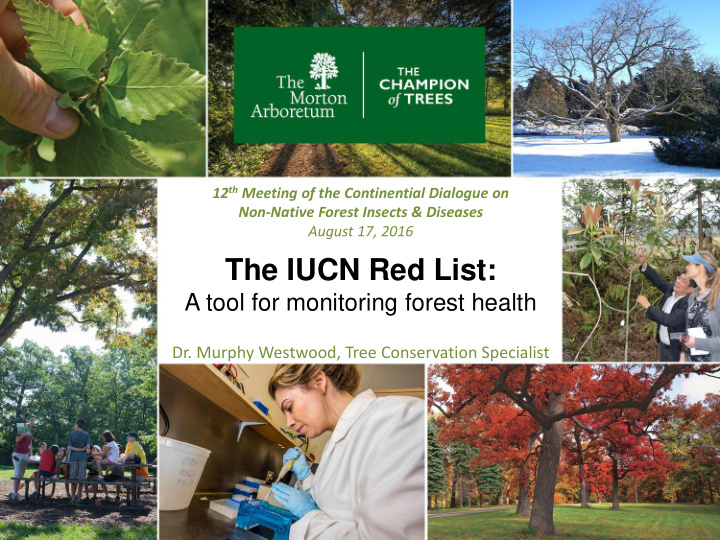



12 th Meeting of the Continential Dialogue on Non-Native Forest Insects & Diseases August 17, 2016 The IUCN Red List: A tool for monitoring forest health Dr. Murphy Westwood, Tree Conservation Specialist
The Red List of Threatened Species • • Population size Habitat quality • • Population fragmentation Threats • • Geographic range Level of exploitation Threat categories are based on demographic & ecological data
What is a “threatened” species? Balsam woolly adelgid
Trends and drivers of forest threat
Trends and drivers of forest threat North American tree species on IUCN Red List 200 180 160 140 120 100 80 60 40 20 0 EX EW CR EN VU NT DD LC 229 species of concern
Trends and drivers of forest threat North American trees threatened by non-native pests/diseases 80 70 60 50 All threats 40 Invasives 30 20 10 0 EX EW CR EN VU NT DD
Trends and drivers of forest threat Threats to North American tree species Transportation Wood & pulp plantations Energy production & mining Hunting Other Gathering terrestrial plants 70% of tree species of concern Pollution Geological events Annual & perennial non-timber crops Recreational activities Logging & wood harvesting Residential & commercial development Climate change & severe weather Fire & fire suppression Livestock farming & ranching Invasive species & diseases 0 20 40 60 80 100 120 140 160 180
Using the IUCN Red List Limitations Applications • • Incomplete information Species snapshots o 412 tree species o Threats • o Ecology Not compiled systematically • o Habitat Assessments out of date o 42% >10 years old o Population trends • • Slow to react to rapid invasions Advanced query options o EAB/ Fraxinus profunda o Status o Threat class o Life form o Date assessed o Taxonomic rank o Geographic region/state • Analyze trends • Identify gaps in knowledge
IUCN Red List of Threatened Species
Recommend
More recommend